-
 Bitcoin
Bitcoin $107,544.4358
-0.02% -
 Ethereum
Ethereum $2,512.4208
3.03% -
 Tether USDt
Tether USDt $1.0002
0.00% -
 XRP
XRP $2.2954
4.88% -
 BNB
BNB $658.9416
1.53% -
 Solana
Solana $156.9061
3.43% -
 USDC
USDC $0.9999
0.01% -
 TRON
TRON $0.2789
1.11% -
 Dogecoin
Dogecoin $0.1666
1.20% -
 Cardano
Cardano $0.5831
4.07% -
 Hyperliquid
Hyperliquid $40.5472
6.61% -
 Bitcoin Cash
Bitcoin Cash $517.2319
5.56% -
 Sui
Sui $2.8191
0.12% -
 Chainlink
Chainlink $13.5273
1.06% -
 UNUS SED LEO
UNUS SED LEO $9.1224
1.19% -
 Avalanche
Avalanche $18.1354
0.37% -
 Stellar
Stellar $0.2401
1.68% -
 Toncoin
Toncoin $2.9528
2.57% -
 Shiba Inu
Shiba Inu $0.0...01152
-0.24% -
 Litecoin
Litecoin $86.8100
-0.26% -
 Hedera
Hedera $0.1520
2.18% -
 Monero
Monero $318.1344
2.43% -
 Polkadot
Polkadot $3.4355
-0.04% -
 Dai
Dai $1.0001
0.02% -
 Bitget Token
Bitget Token $4.5482
-1.07% -
 Ethena USDe
Ethena USDe $1.0003
0.01% -
 Uniswap
Uniswap $7.2490
0.40% -
 Aave
Aave $278.1005
0.65% -
 Pepe
Pepe $0.0...09893
2.45% -
 Pi
Pi $0.5129
-2.55%
How to analyze the candlestick chart of Bybit contract? What are the commonly used technical indicators?
Analyzing Bybit candlestick charts involves identifying patterns like Doji, Hammer, and Engulfing, and using technical indicators such as MA, RSI, and Bollinger Bands for better trading insights.
May 05, 2025 at 08:49 am
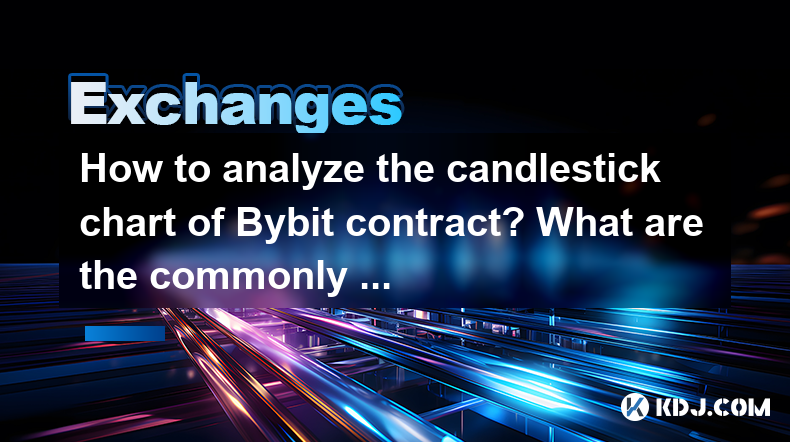
Analyzing the candlestick chart of a Bybit contract is a fundamental skill for any cryptocurrency trader. This method provides insights into market trends, price movements, and potential trading opportunities. In this article, we will explore how to effectively analyze the candlestick chart on Bybit, as well as discuss some commonly used technical indicators that traders often employ to enhance their analysis.
Understanding Candlestick Charts on Bybit
Candlestick charts are a popular tool among traders for visualizing price movements over time. Each candlestick represents the price action of a specific time period, typically ranging from one minute to one day, depending on the trader's preference. On Bybit, you can easily switch between different time frames to suit your trading strategy.
A single candlestick on the Bybit chart consists of a body and wicks (or shadows). The body of the candlestick represents the opening and closing prices of the contract during the selected time frame. If the closing price is higher than the opening price, the body is typically colored green or white, indicating a bullish period. Conversely, if the closing price is lower than the opening price, the body is colored red or black, signaling a bearish period. The wicks extend from the top and bottom of the body, showing the highest and lowest prices reached during the time frame.
How to Analyze Candlestick Patterns
Analyzing candlestick patterns involves identifying specific formations that can signal potential market movements. Some common patterns include the Doji, Hammer, and Engulfing patterns. Each of these patterns can provide valuable insights into market sentiment and potential reversals.
Doji: This pattern occurs when the opening and closing prices are very close or equal, resulting in a small or non-existent body. A Doji indicates indecision in the market and can signal a potential reversal.
Hammer: A Hammer pattern has a small body at the top of the candlestick and a long lower wick. This pattern often appears at the bottom of a downtrend and can signal a potential bullish reversal.
Engulfing: An Engulfing pattern occurs when a smaller candlestick is completely engulfed by a larger one of the opposite color. A bullish engulfing pattern, where a green candlestick engulfs a red one, can signal a potential upward trend, while a bearish engulfing pattern indicates a potential downward trend.
Using Technical Indicators on Bybit
Technical indicators are mathematical calculations based on historical price, volume, or open interest data that help traders predict future market movements. Bybit offers a variety of technical indicators that traders can use to enhance their candlestick chart analysis. Some of the most commonly used indicators include the Moving Average (MA), Relative Strength Index (RSI), and Bollinger Bands.
Moving Average (MA): The Moving Average smooths out price data to create a single flowing line, which makes it easier to identify the direction of the trend. Traders often use the Simple Moving Average (SMA) and the Exponential Moving Average (EMA) to analyze price trends. For example, a short-term EMA crossing above a long-term EMA can signal a bullish trend, while the opposite can indicate a bearish trend.
Relative Strength Index (RSI): The RSI is a momentum oscillator that measures the speed and change of price movements. It ranges from 0 to 100 and is typically used to identify overbought or oversold conditions. An RSI value above 70 indicates that an asset may be overbought and could be due for a price correction, while an RSI below 30 suggests that it may be oversold and could be poised for a rebound.
Bollinger Bands: Bollinger Bands consist of a middle band being an N-period simple moving average, an upper band at K times an N-period standard deviation above the middle band, and a lower band at K times an N-period standard deviation below the middle band. Traders use Bollinger Bands to gauge volatility and identify potential breakouts. When the price moves close to the upper band, it may indicate an overbought condition, while a price near the lower band may suggest an oversold condition.
Applying Technical Indicators to Candlestick Charts
To effectively apply technical indicators to candlestick charts on Bybit, follow these steps:
Select the Indicator: Navigate to the Bybit trading interface and click on the "Indicators" tab. Choose the technical indicator you wish to apply, such as the Moving Average, RSI, or Bollinger Bands.
Adjust Settings: Depending on the indicator, you may need to adjust settings such as the period length or standard deviation. For example, when setting up a Moving Average, you can choose the number of periods (e.g., 50 for a 50-day MA) and the type (SMA or EMA).
Analyze the Chart: Once the indicator is applied, analyze how it interacts with the candlestick chart. Look for crossovers, divergences, and other signals that may indicate potential trading opportunities.
Combine Indicators: Many traders use multiple indicators to confirm signals and reduce the likelihood of false positives. For instance, you might use the RSI to identify overbought or oversold conditions and then use a Moving Average crossover to confirm a trend reversal.
Identifying Key Support and Resistance Levels
Support and resistance levels are crucial for understanding potential price movements on a candlestick chart. Support is a price level where a downtrend can be expected to pause due to a concentration of demand, while resistance is a price level where an uptrend can be expected to pause due to a concentration of supply.
To identify these levels on Bybit, look for areas where the price has historically reversed or stalled. These can be identified by drawing horizontal lines on the chart at these key price points. Once identified, these levels can help you make more informed trading decisions, such as setting stop-loss orders or identifying potential entry and exit points.
Practical Example of Candlestick and Indicator Analysis
Let's walk through a practical example of how to analyze a Bybit contract candlestick chart using technical indicators:
Step 1: Open the Bybit trading platform and select the contract you wish to analyze. Choose a time frame that aligns with your trading strategy, such as the 1-hour chart.
Step 2: Apply a 50-day EMA and a 200-day EMA to the chart. Look for instances where the 50-day EMA crosses above the 200-day EMA, which can signal a bullish trend, or below it, which can indicate a bearish trend.
Step 3: Add the RSI indicator with a period of 14. Monitor the RSI for values above 70 (overbought) or below 30 (oversold). If the RSI shows an overbought condition and the 50-day EMA crosses below the 200-day EMA, it may indicate a potential bearish reversal.
Step 4: Identify key support and resistance levels by drawing horizontal lines at historical price points where the price has reversed or stalled. Use these levels to set stop-loss orders or identify potential entry and exit points.
Step 5: Look for candlestick patterns such as Doji, Hammer, or Engulfing patterns near the identified support and resistance levels. For example, if you spot a Hammer pattern at a support level, it could signal a potential bullish reversal.
By combining candlestick analysis with technical indicators and support/resistance levels, you can gain a more comprehensive understanding of the market and make more informed trading decisions.
Frequently Asked Questions
Q: Can I use candlestick analysis on Bybit for short-term trading?
A: Yes, candlestick analysis is highly effective for short-term trading on Bybit. By selecting shorter time frames, such as 1-minute or 5-minute charts, you can identify quick price movements and potential trading opportunities. However, it's important to combine candlestick analysis with other technical indicators to confirm signals and reduce the risk of false positives.
Q: How often should I check my candlestick charts on Bybit?
A: The frequency of checking your candlestick charts depends on your trading strategy and time frame. For day traders, it may be necessary to monitor the charts continuously throughout the trading day. Swing traders and position traders may check the charts less frequently, such as once or twice a day, to identify longer-term trends and potential entry or exit points.
Q: Are there any risks associated with relying solely on candlestick analysis for trading on Bybit?
A: Yes, relying solely on candlestick analysis can be risky. While candlestick patterns can provide valuable insights into market sentiment, they are not foolproof. False signals can occur, and market conditions can change rapidly. To mitigate these risks, it's important to use candlestick analysis in conjunction with other technical indicators, fundamental analysis, and risk management strategies.
Q: Can I customize the appearance of candlestick charts on Bybit?
A: Yes, Bybit allows you to customize the appearance of your candlestick charts. You can change the color scheme, adjust the thickness of the candlesticks, and add various technical indicators to enhance your analysis. To customize your charts, navigate to the "Settings" or "Preferences" section of the Bybit trading platform and make the desired adjustments.
Disclaimer:info@kdj.com
The information provided is not trading advice. kdj.com does not assume any responsibility for any investments made based on the information provided in this article. Cryptocurrencies are highly volatile and it is highly recommended that you invest with caution after thorough research!
If you believe that the content used on this website infringes your copyright, please contact us immediately (info@kdj.com) and we will delete it promptly.
- OKX and Binance Delist Trading Pairs: What's Going On?
- 2025-07-01 02:30:12
- Pepeto vs. Shiba Inu: Can the New Meme Coin Dethrone the King?
- 2025-07-01 02:50:11
- Saylor, Bitcoin, Holdings: Strategy's Crypto Empire Grows
- 2025-07-01 02:30:12
- Coinbase, Altcoins, and Listings: What's the Buzz?
- 2025-07-01 00:30:11
- Chainlink's Bullish Signals: Investors Bet on Long-Term Value
- 2025-07-01 00:50:12
- CICADA Finance Soars on BNB Chain: A TGE Deep Dive
- 2025-07-01 01:30:11
Related knowledge
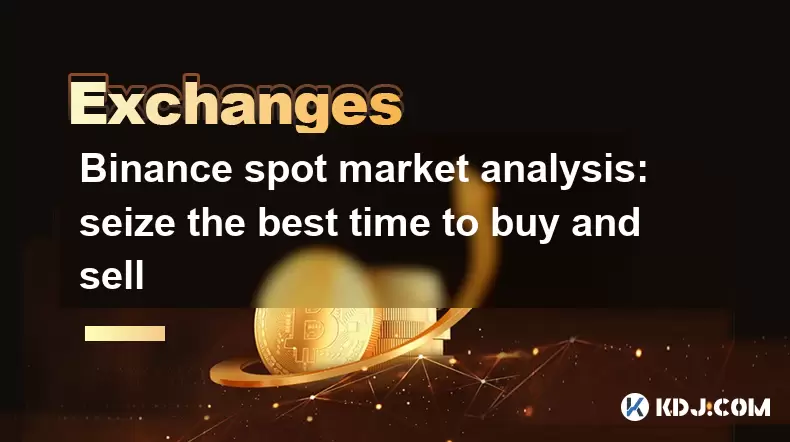
Binance spot market analysis: seize the best time to buy and sell
Jun 19,2025 at 04:56pm
Understanding the Binance Spot MarketThe Binance spot market is one of the most popular platforms for cryptocurrency trading globally. It allows users to trade digital assets at current market prices, making it essential for traders aiming to buy low and sell high. Unlike futures or margin trading, spot trading involves direct ownership of the asset aft...
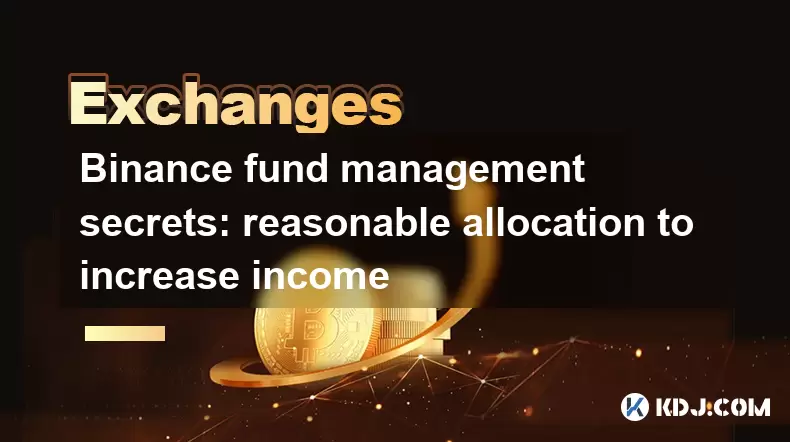
Binance fund management secrets: reasonable allocation to increase income
Jun 22,2025 at 02:29pm
Understanding Binance Fund ManagementBinance fund management involves strategic allocation of your cryptocurrency assets to optimize returns while managing risk. The key to successful fund management lies in understanding how different investment options on the Binance platform can be utilized to create a diversified portfolio. This includes spot tradin...
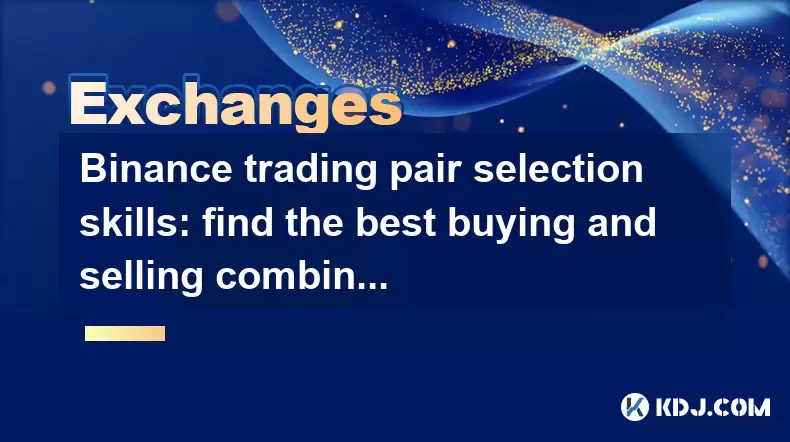
Binance trading pair selection skills: find the best buying and selling combination
Jun 23,2025 at 02:49am
Understanding the Basics of Trading Pairs on BinanceBefore diving into trading pair selection skills, it's essential to understand what a trading pair is. On Binance, a trading pair refers to two cryptocurrencies that can be traded against each other. For example, BTC/USDT means Bitcoin is being traded against Tether. Each trading pair has its own liqui...
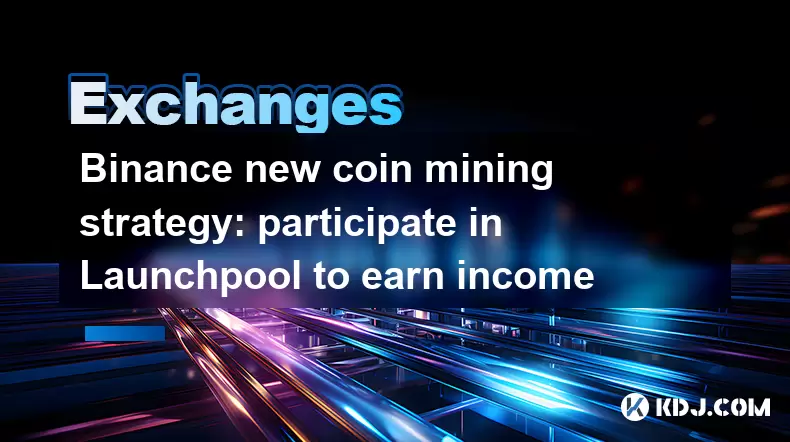
Binance new coin mining strategy: participate in Launchpool to earn income
Jun 23,2025 at 11:56am
What is Binance Launchpool and how does it work?Binance Launchpool is a feature introduced by the world’s largest cryptocurrency exchange, Binance, to allow users to earn new tokens through staking. This platform enables users to stake their existing cryptocurrencies (such as BNB, BUSD, or other supported assets) in exchange for newly launched tokens. T...
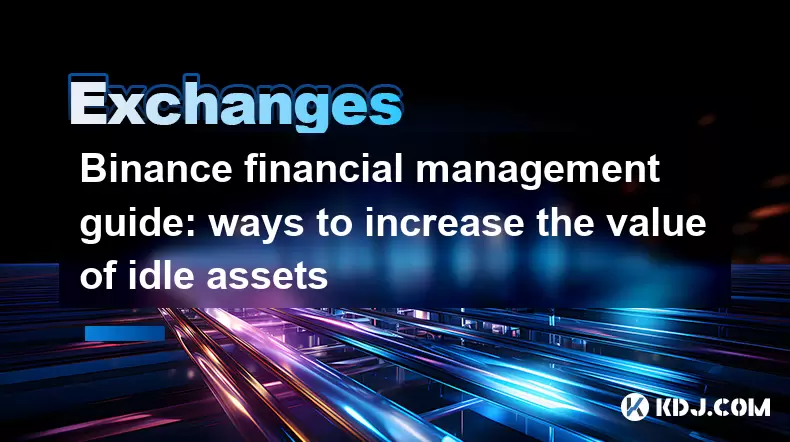
Binance financial management guide: ways to increase the value of idle assets
Jun 19,2025 at 11:22pm
Understanding Idle Assets in the Cryptocurrency SpaceIn the fast-paced world of cryptocurrency, idle assets refer to digital currencies that are not actively being used for trading, staking, or yield farming. Holding these funds in a wallet without utilizing them means missing out on potential growth opportunities. Binance, as one of the leading platfor...
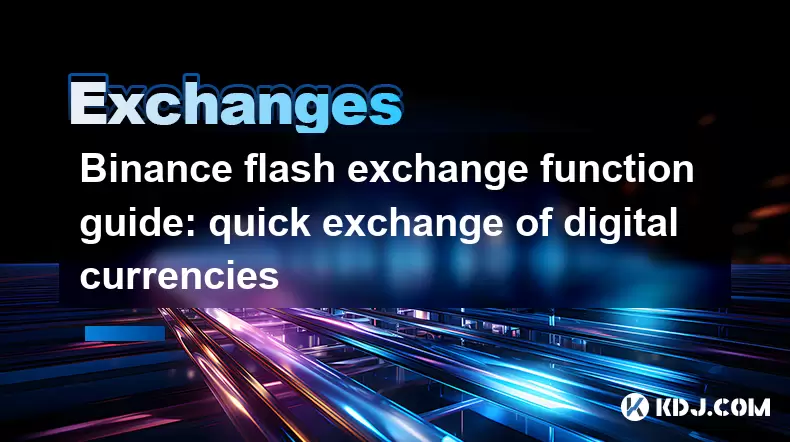
Binance flash exchange function guide: quick exchange of digital currencies
Jun 23,2025 at 12:29pm
What is the Binance Flash Exchange Function?The Binance Flash Exchange function is a powerful tool designed to allow users to instantly swap between supported cryptocurrencies without the need for placing traditional buy/sell orders. This feature simplifies the trading process by offering a direct exchange mechanism, eliminating the requirement to conve...

Binance spot market analysis: seize the best time to buy and sell
Jun 19,2025 at 04:56pm
Understanding the Binance Spot MarketThe Binance spot market is one of the most popular platforms for cryptocurrency trading globally. It allows users to trade digital assets at current market prices, making it essential for traders aiming to buy low and sell high. Unlike futures or margin trading, spot trading involves direct ownership of the asset aft...

Binance fund management secrets: reasonable allocation to increase income
Jun 22,2025 at 02:29pm
Understanding Binance Fund ManagementBinance fund management involves strategic allocation of your cryptocurrency assets to optimize returns while managing risk. The key to successful fund management lies in understanding how different investment options on the Binance platform can be utilized to create a diversified portfolio. This includes spot tradin...

Binance trading pair selection skills: find the best buying and selling combination
Jun 23,2025 at 02:49am
Understanding the Basics of Trading Pairs on BinanceBefore diving into trading pair selection skills, it's essential to understand what a trading pair is. On Binance, a trading pair refers to two cryptocurrencies that can be traded against each other. For example, BTC/USDT means Bitcoin is being traded against Tether. Each trading pair has its own liqui...

Binance new coin mining strategy: participate in Launchpool to earn income
Jun 23,2025 at 11:56am
What is Binance Launchpool and how does it work?Binance Launchpool is a feature introduced by the world’s largest cryptocurrency exchange, Binance, to allow users to earn new tokens through staking. This platform enables users to stake their existing cryptocurrencies (such as BNB, BUSD, or other supported assets) in exchange for newly launched tokens. T...

Binance financial management guide: ways to increase the value of idle assets
Jun 19,2025 at 11:22pm
Understanding Idle Assets in the Cryptocurrency SpaceIn the fast-paced world of cryptocurrency, idle assets refer to digital currencies that are not actively being used for trading, staking, or yield farming. Holding these funds in a wallet without utilizing them means missing out on potential growth opportunities. Binance, as one of the leading platfor...

Binance flash exchange function guide: quick exchange of digital currencies
Jun 23,2025 at 12:29pm
What is the Binance Flash Exchange Function?The Binance Flash Exchange function is a powerful tool designed to allow users to instantly swap between supported cryptocurrencies without the need for placing traditional buy/sell orders. This feature simplifies the trading process by offering a direct exchange mechanism, eliminating the requirement to conve...
See all articles

























































































